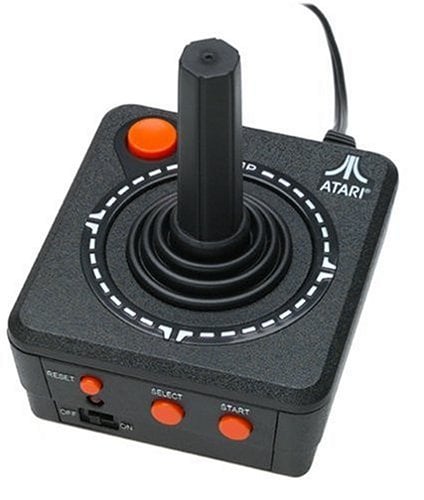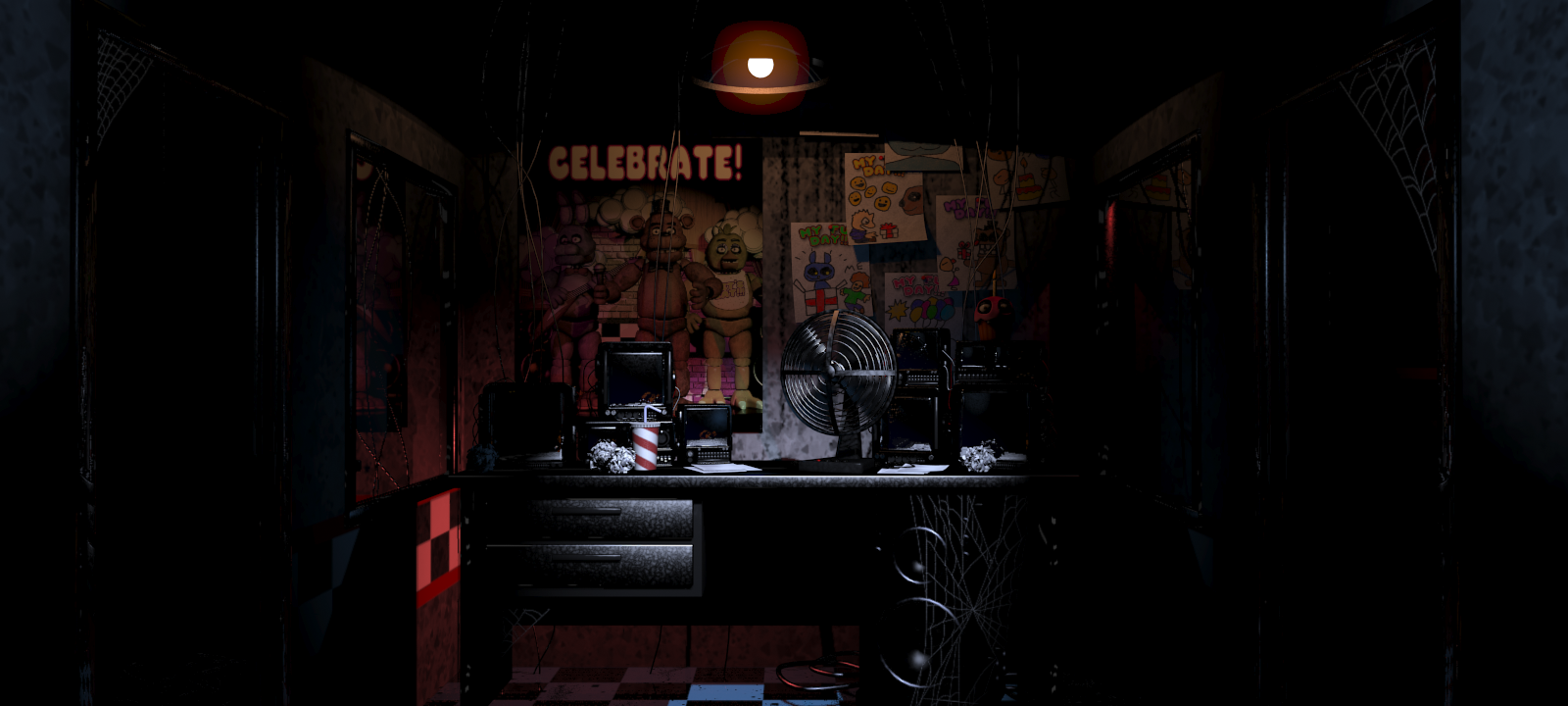One of the most unique characteristics of a video game, setting the medium apart from other media like movies or books, is the control that the player is given (the interactivity). Action games like Super Meat Boy have been praised for giving the player precise and complete control over their character. Other games, like Five Nights at Freddy’s, are praised for giving the player extremely limited control. When is it beneficial to give the player total control, and when is it appropriate to limit their control of the game world? Let’s take a look at a few standout games and how they handle player influence.
First, let’s establish what I mean by “control” or “player influence.” The Merriam-Webster dictionary says that it’s “to direct influence over” or “to have power over something.” To relate this to video games, I’ll say that having control means having a meaningful influence or impact on the game’s systems/mechanics. The more control the player is given, the more influence they have over the game’s systems/mechanics. Games that give the player a high level of control will be considered to have a high influence rating, and vice versa for games that limit control.
More buttons doesn’t mean more control/influence. It’s all about the game’s design.
Because video games are an interactive medium, it makes sense to give the player more control/influence over what happens. It makes sense to give the player more opportunities to interact with the game world. Many action games, such as those in the Call of Duty, The Elder Scrolls, or Devil May Cry series, give the player plenty of options as to how to approach the game’s mechanics. In Call of Duty the player has complete control over their character. Aiming, shooting, running, crouching, and jumping are all controlled by the player. Anything that a soldier could do in reality can usually be done with the press of a button in Call of Duty. The Elder Scrolls: Skyrim lets the player choose the mechanics they want to level up, thus allowing for unique approaches to the game’s scenarios. Influence is given in the form of a complex and dynamic system to level up the Dragonborn’s abilities. Devil May Cry asks the player to dispose of countless angels and demons by providing a large list of attacks and combos. This approach allows for control over every attack, with the only limiting factor usually being the attack animations. I have given each one of these games a high influence rating because the player is offered a wealth of options on how to influence the game’s systems. Not a single button on the controller goes to waste in these games. New scenarios are constantly being thrown at the player, and these games demand a high level of control over their character to reach its maximum potential (or else face the consequences of a game over).
Action games where the player assumes the role of a single character usually limit the player through attack animations (as mentioned earlier on the topic of Devil May Cry). The Dark Souls games offer a wide variety of weapon and combat styles, but every attack must be planned out in advance. Once a button is pressed to perform a heavy attack, no other action can be done until that attack has finished. This is very similar to the Smash Brothers series. Every attack made can be seen as an opening for a counterattack to the opponent. These games indirectly limit the player’s control over the character. You, the player, choose to do a heavy hitting “up-smash,” but upon missing your opponent with this attack, you’re left defenseless for a brief moment. I would still consider these games to have a high influence rating because the control the player has over the character is only limited by their own inputs. The game hasn’t removed any of the player’s control but allowed the player to strategically limit it themselves.

A perfectly timed dodge leaves the opponent open for a counterattack.
A developer doesn’t need to make a fast-paced, high-action game in order to give the player full control over the mechanics. Strategy games, turn-based or real-time, are games that I would also consider to have high influence ratings. Games like Civilization, Starcraft, or XCOM allow the player to take control of multiple people, ranging from a small squadron to an entire empire. In turn-based tactics games, the player is given every opportunity to plan ahead before the enemy makes a move. They’re given the option to look over their own information and stats, and sometimes their opponents’ info and stats, and make a well-informed decision before passing the baton over to the enemy. Real-time games offer the same form of control, but both teams work at the same time rather than one at a time. The only way that these games remove control from the player is by not allowing them to see what the enemy is up to. The army that the player controls can only influence how the opponent acts.
It’s also important to note that many high influence games will limit the influence given to the player once or twice throughout the main story. This usually comes in the form of removing the items that the player has been relying on (like on Eventide Island in The Legend of Zelda: Breath of the Wild). These are low influence levels in high influence games. These levels normally serve as a reminder to the player as to how far they’ve come. The game still retains its high influence rating, but it uses a low influence level to change up the gameplay style.
Even after losing all of his armor and being stripped to his undergarments, Link still remains determined through the Eventide Island side quest.
Now, let’s talk about low-influence games and the genre with which this design works well.
At first, limiting control given to the player sounds like a passive, movie-like experience, but being able to carefully limit control can create an experience just as engaging as any high influence game. A low influence experience usually creates a tense atmosphere, where the player is at the mercy of the game itself. Ideal reactions to the game’s scenarios are key to succeeding in these games.
A perfect example is the Five Nights at Freddy’s series. The goal of FNAF is to survive the six-hour night shift at a pizzeria (similar to that of Chuck E. Cheese’s), but the animatronic animals are all out to kill you. The player can’t move from their starting position in the office, and they must carefully monitor the movements of the animatronics through the security camera station. The only protection they have if the animatronics get too close are two doors that can be opened and closed at will (provided that there’s still power to do so). Should one of the animatronics enter the office, it’s curtains for the newly hired night watchman.
The player has no way of moving (being stuck in the office), minimal options for defense (only closing the doors), and using those defenses only lowers the chances of survival in the long run (depleting power resources), yet FNAF is one of the most widely recognized and most followed horror video game franchises ever. The little influence that the player is given creates a suspenseful atmosphere where every move made could very well be the last (and there could be a jumpscare … nobody likes jumpscares). FNAF would not be the same if the night guard (the player) could roam around the pizzeria and beat down the animatronics; the player would no longer feel threatened by the presence of Freddy. To give FNAF a high influence rating would also be to remove the horrifying mechanics that make the player feel vulnerable.
The player cannot move from this spot while playing Five Nights at Freddy’s. They can only sit still while the animatronics hunt them down.
Other horror games limit player control in a similar way. The Outlast games only allow vision in dark places through a camcorder that runs out of battery incredibly fast. Resident Evil hands out very limited ammunition to fight off the zombie uprising. Slender only allows the player to run … and that’s it (I never understood Slender). Low influence ratings work best in horror video games, and I have yet to see this design work well in another genre of video game.
Player influence is key in video game design. The control given to the player makes video games more unique than any other medium of entertainment. It’s most appropriate in action and strategy games to allow the player to have a high influence, while in most horror games, limiting influence creates a more intense and scary experience. Consider how much control has been given to you in some of your favorite video games. It might reveal more about the game than you realize.











Published: Feb 20, 2018 04:45 pm